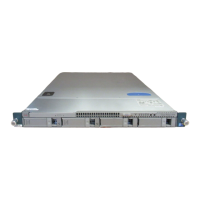Information About Port Channels
A port channel is an aggregation of multiple physical interfaces that creates a logical interface. You can bundle
up to eight individual active links into a port channel to provide increased bandwidth and redundancy. Port
channeling also load balances traffic across these physical interfaces. The port channel stays operational as
long as at least one physical interface within the port channel is operational.
You can use static port channels, with no associated aggregation protocol, for a simplified configuration.
Port Channels
A port channel bundles physical links into a channel group to create a single logical link that provides the
aggregate bandwidth of up to eight physical links. If a member port within a port channel fails, the traffic
previously carried over the failed link switches to the remaining member ports within the port channel.
You can bundle up to eight ports into a static port channel without using any aggregation protocol.
The device does not support Port Aggregation Protocol (PAgP) for port channels.Note
Each port can be in only one port channel. All the ports in a port channel must be compatible; they must use
the same speed and duplex mode. When you run static port channels with no aggregation protocol, the physical
links are all in the on channel mode.
You can create port channels directly by creating the port channel interface, or you can create a channel group
that acts to aggregate individual ports into a bundle. When you associate an interface with a channel group,
the software creates a matching port channel automatically if the port channel does not already exist. In this
instance, the port channel assumes the Layer 2 configuration of the first interface. You can also create the
port channel first. In this instance, the Cisco Nexus 1000V creates an empty channel group with the same
channel number as the port channel and takes the default Layer 2 configuration, as well as the compatibility
configuration.
The port channel is operationally up when at least one of the member ports is up and is in the channeling
state. The port channel is operationally down when all member ports are operationally down.
Note
Compatibility Checks
When you add an interface to a port channel group, the following compatibility checks are made before
allowing the interface to participate in the port channel:
•
Network layer
•
(Link) speed capability
•
Speed configuration
•
Duplex capability
Cisco Nexus 1000V for VMware vSphere Interface Configuration Guide, Release 5.x
46
Configuring Port Channels
Information About Port Channels

